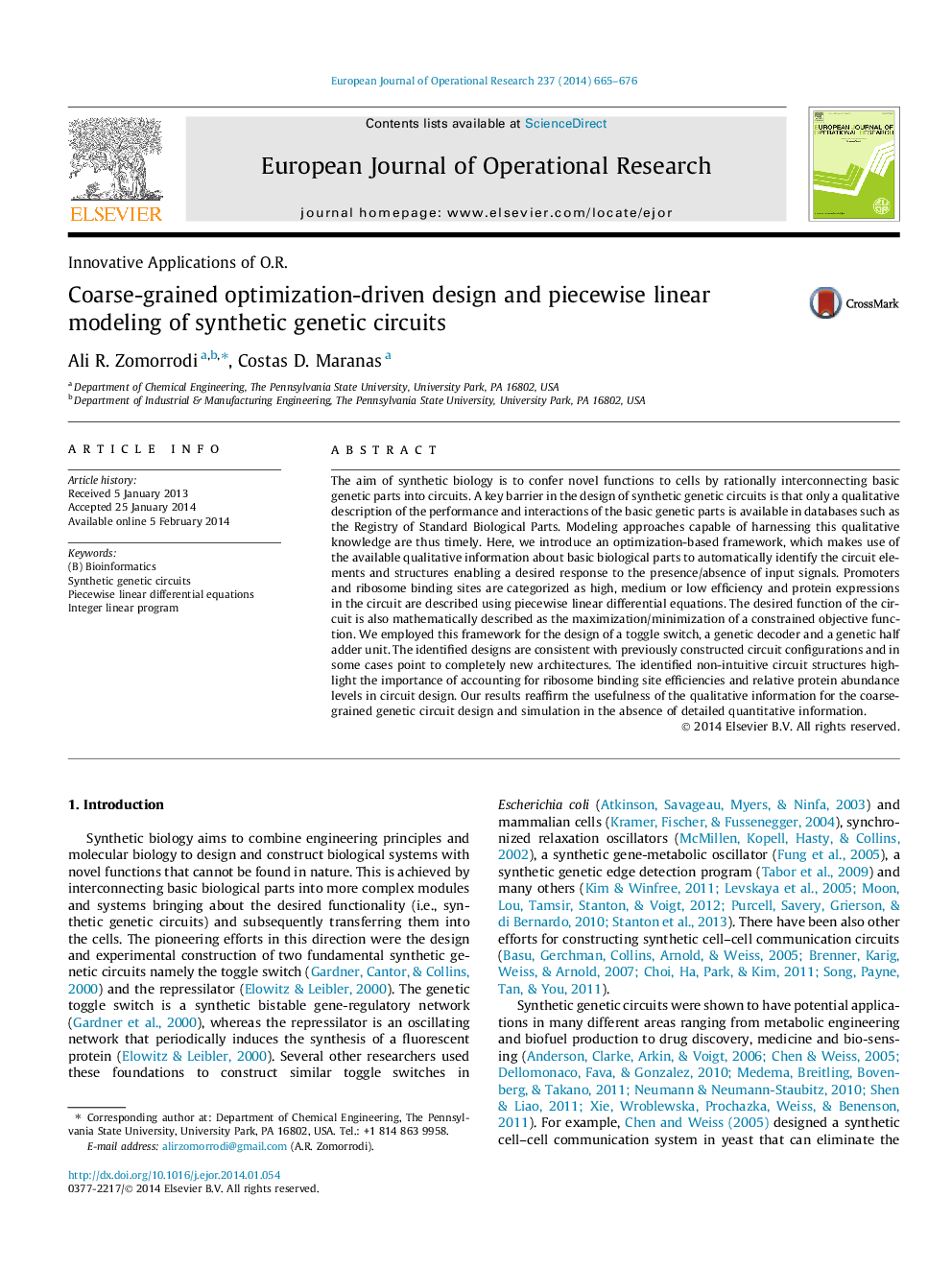| Article ID | Journal | Published Year | Pages | File Type |
|---|---|---|---|---|
| 478152 | European Journal of Operational Research | 2014 | 12 Pages |
•Optimization-based approach for coarse-grained design of synthetic genetic circuits.•Qualitative description of basic biological parts used for the circuit design.•Promoters and ribosome binding sites categorized as low, medium and high efficiency.•Designed a genetic toggle switch, a 2–4 genetic decoder and a genetic half adder.•Identified novel and non-intuitive as well as known circuit structures.
The aim of synthetic biology is to confer novel functions to cells by rationally interconnecting basic genetic parts into circuits. A key barrier in the design of synthetic genetic circuits is that only a qualitative description of the performance and interactions of the basic genetic parts is available in databases such as the Registry of Standard Biological Parts. Modeling approaches capable of harnessing this qualitative knowledge are thus timely. Here, we introduce an optimization-based framework, which makes use of the available qualitative information about basic biological parts to automatically identify the circuit elements and structures enabling a desired response to the presence/absence of input signals. Promoters and ribosome binding sites are categorized as high, medium or low efficiency and protein expressions in the circuit are described using piecewise linear differential equations. The desired function of the circuit is also mathematically described as the maximization/minimization of a constrained objective function. We employed this framework for the design of a toggle switch, a genetic decoder and a genetic half adder unit. The identified designs are consistent with previously constructed circuit configurations and in some cases point to completely new architectures. The identified non-intuitive circuit structures highlight the importance of accounting for ribosome binding site efficiencies and relative protein abundance levels in circuit design. Our results reaffirm the usefulness of the qualitative information for the coarse-grained genetic circuit design and simulation in the absence of detailed quantitative information.
